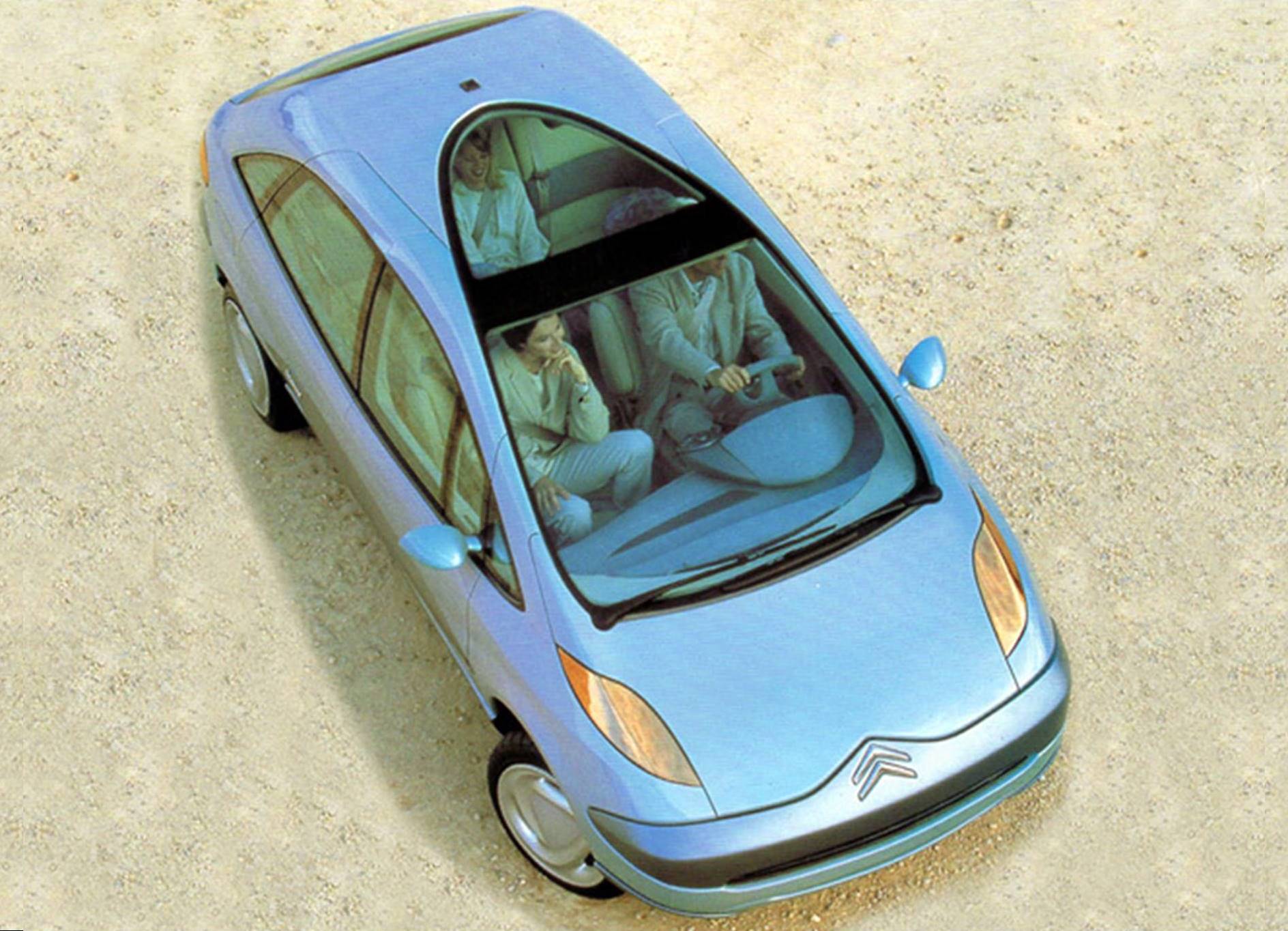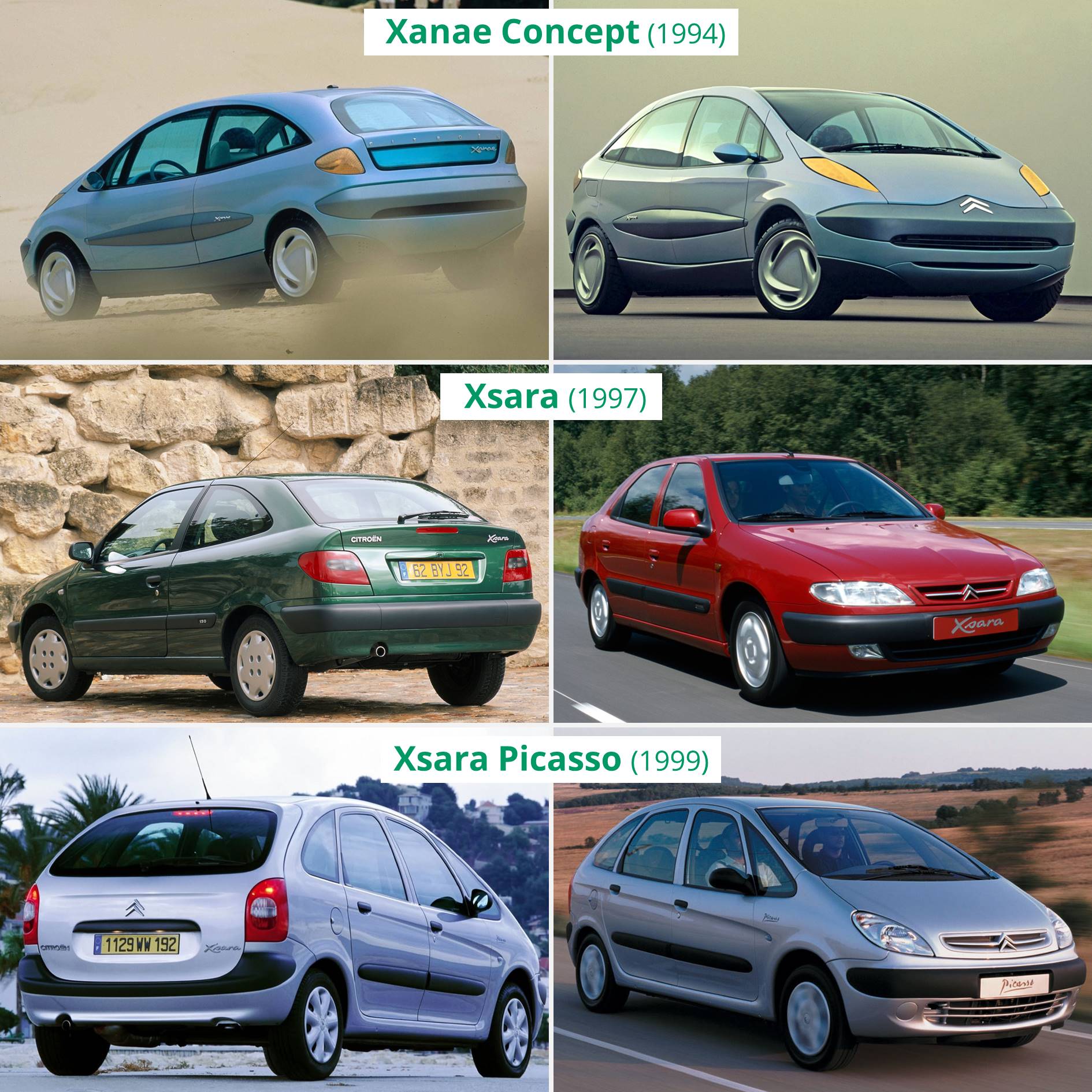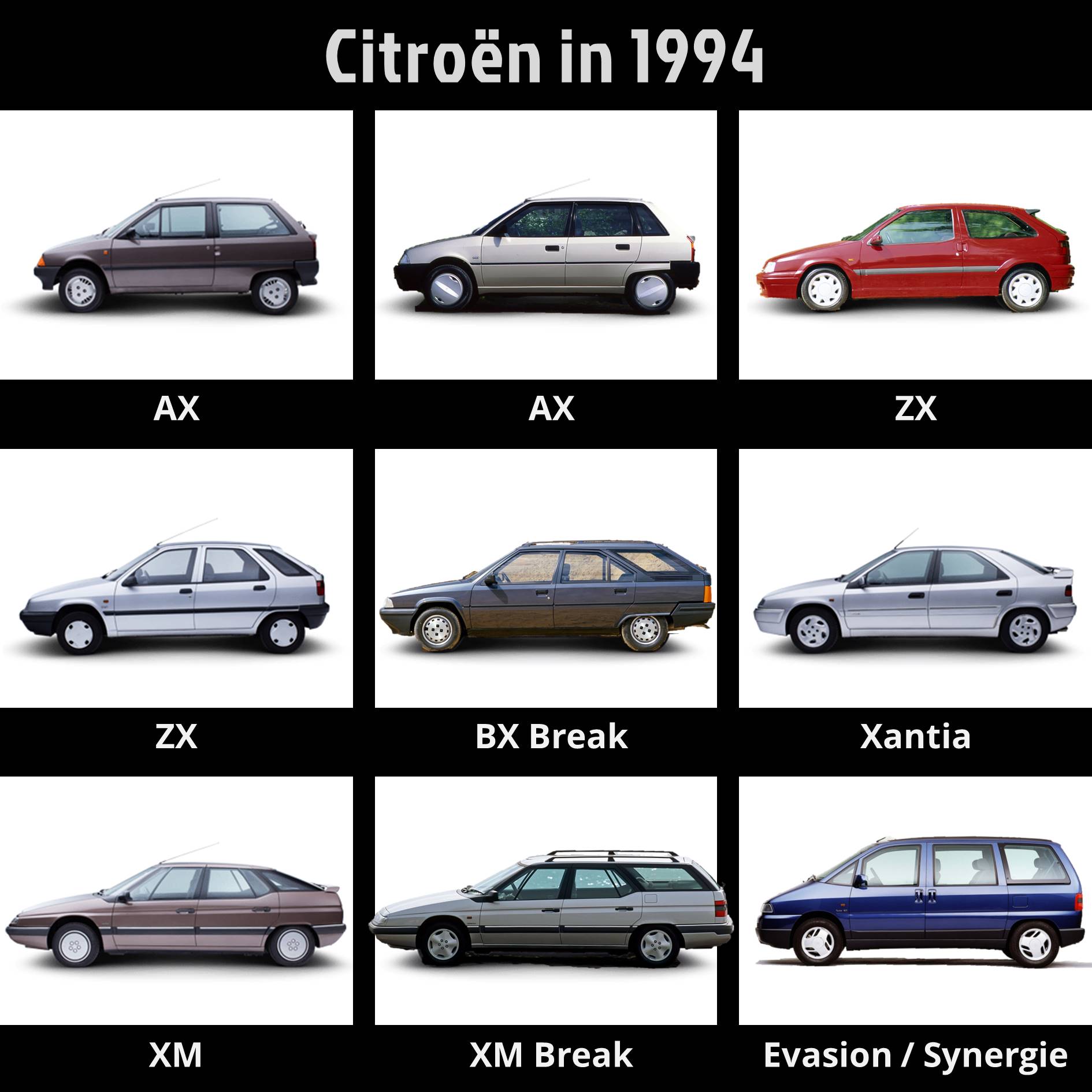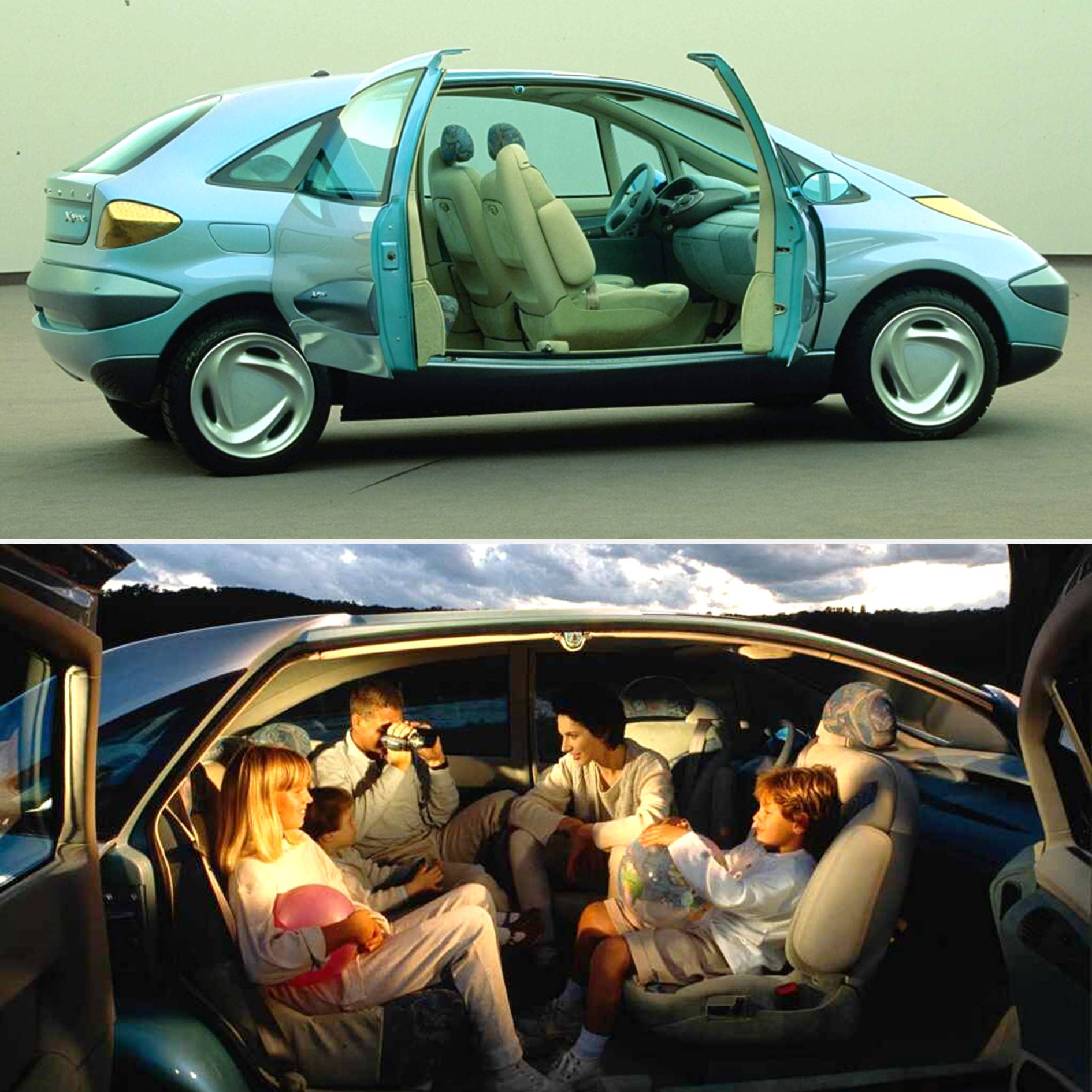MY CLASSICS
Citroën Xanae
Cars
| 25-09-2020
When I put my article about the Renault Mégane Scénic online in February, I didn't think that seven months later I would still be writing about midi MPVs. Where does my – perhaps a bit excessive – interest in those practical family cars come from? I can best explain that on the basis of the Citroën Xanae.

The Citroën Xanae has never been sold, because it was a concept car. In general, only one copy of this kind of show car is made, completely by hand, and that's very expensive, of course, especially if it is a concept car that functions completely like a 'real' car, as was the case with the Xanae. A concept car is a showcase for the brand and a way of showing a new concept – hence the name. Sometimes a manufacturer’s main goal is generating publicity for an upcoming production model by a concept car that’s little more than a spiced up pre-production car, but that does not apply to the Xanae. This Citroën is one of the 'real' concept cars category: models that provide a glimpse into the future and foreshadow several models or sometimes even the design language of a brand's full model range. In the case of the Xanae, elements can be recognized from the later Xsara berline (5-door hatchback) and Coupé (in this case a 3-door hatchback), but also from Citroën’s first midi MPV, the Xsara Picasso. Unfortunately, those models were all a lot less progressive than the Xanae.

To understand why the design of the Xanae had such an impact on me as an eleven-year-old boy, you should imagine which models were in the 1994 Citroën showroom (in the Netherlands). At the time, the range consisted of the AX, ZX, BX Break (which was about to be replaced by the ZX Break), the Xantia, XM, XM Break and Evasion (called Synergie in English-speaking countries). All these models existed by the grace of straight lines and angles and – apart from the XM – generally are not considered to be the crème de la crème of Citroën's oeuvre (wrongly, as far as I'm concerned). In addition, MPVs were anything but common at the time, the midi MPV had yet to be invented and even the marketing departments had no idea of terms like crossover and SUV. The flexibility of interiors kind of stopped with the ability to fold the back seat. And then suddenly there is a concept car with vertically placed, orange-coloured, almond-shaped headlights, in a short, steeply rising nose that turns into the A-pillar almost without a kink, where there is an extra side window in front of the front door. When opening the doors, the two rear ones opening in opposite directions without leaving a B-pillar behind, you then enter an interior with equally flowing shapes and with front seats that you can turn around, thus creating a kind of living room – so all in all, something quite different from the average family hatchback.

Of course, in the early 1990s, Citroën was not the only brand to focus on this kind of concept. Flexible interiors were also seen in concept cars of other brands, rear-hinged rear doors could even be called retro with a little good will and Mitsubishi had been supplying an MPV with comparable dimensions (only 8 cm longer than the Xanae and as long as the Xsara Picasso) since 1984 with the Space Wagon. Still, the Xanae has stayed with me the most of all concept midi MPVs. This is due to the, for the brand, surprisingly fresh design, the 'rounded triangles' that are reflected throughout the design, my love for French cars, especially Peugeot and Citroën, and the fact that I owned a Citroën magazine at the time – unfortunately no longer – in which that Xanae was discussed extensively. That was just when my car love started to blossom, and so I studied the design of the Xanae extensively back then. Car dealers, never underestimate the influence of promotional material on boys who love cars.

To conclude, please direct your attention to the hubcaps of the Xanae. In any case, I assume they are hubcaps, for lack of visible bolts. You would never see hubcaps on a concept car today, which alone already makes them charming. One of the automotive features typical of the 1990s is three-spoke rims or hubcaps. I think they generally don't make a positive contribution to the appearance of a car, because the wheels often look smaller with all the optical consequences that entails, but on some cars they complete the picture (Saab 900!) and look at how Citroën have implemented the design language of the Xanae in those three-spokes. Is doesn’t get more nineties, right? Really, those hubcaps from the Xanae – I'm an 11-year-old boy all over again.

Citroën Xanae
Real concept carThe Citroën Xanae has never been sold, because it was a concept car. In general, only one copy of this kind of show car is made, completely by hand, and that's very expensive, of course, especially if it is a concept car that functions completely like a 'real' car, as was the case with the Xanae. A concept car is a showcase for the brand and a way of showing a new concept – hence the name. Sometimes a manufacturer’s main goal is generating publicity for an upcoming production model by a concept car that’s little more than a spiced up pre-production car, but that does not apply to the Xanae. This Citroën is one of the 'real' concept cars category: models that provide a glimpse into the future and foreshadow several models or sometimes even the design language of a brand's full model range. In the case of the Xanae, elements can be recognized from the later Xsara berline (5-door hatchback) and Coupé (in this case a 3-door hatchback), but also from Citroën’s first midi MPV, the Xsara Picasso. Unfortunately, those models were all a lot less progressive than the Xanae.

Citroën Xanae, Xsara and Xsara Picasso
Innovative designTo understand why the design of the Xanae had such an impact on me as an eleven-year-old boy, you should imagine which models were in the 1994 Citroën showroom (in the Netherlands). At the time, the range consisted of the AX, ZX, BX Break (which was about to be replaced by the ZX Break), the Xantia, XM, XM Break and Evasion (called Synergie in English-speaking countries). All these models existed by the grace of straight lines and angles and – apart from the XM – generally are not considered to be the crème de la crème of Citroën's oeuvre (wrongly, as far as I'm concerned). In addition, MPVs were anything but common at the time, the midi MPV had yet to be invented and even the marketing departments had no idea of terms like crossover and SUV. The flexibility of interiors kind of stopped with the ability to fold the back seat. And then suddenly there is a concept car with vertically placed, orange-coloured, almond-shaped headlights, in a short, steeply rising nose that turns into the A-pillar almost without a kink, where there is an extra side window in front of the front door. When opening the doors, the two rear ones opening in opposite directions without leaving a B-pillar behind, you then enter an interior with equally flowing shapes and with front seats that you can turn around, thus creating a kind of living room – so all in all, something quite different from the average family hatchback.

The Citroën model range in 1994
Citroën magazineOf course, in the early 1990s, Citroën was not the only brand to focus on this kind of concept. Flexible interiors were also seen in concept cars of other brands, rear-hinged rear doors could even be called retro with a little good will and Mitsubishi had been supplying an MPV with comparable dimensions (only 8 cm longer than the Xanae and as long as the Xsara Picasso) since 1984 with the Space Wagon. Still, the Xanae has stayed with me the most of all concept midi MPVs. This is due to the, for the brand, surprisingly fresh design, the 'rounded triangles' that are reflected throughout the design, my love for French cars, especially Peugeot and Citroën, and the fact that I owned a Citroën magazine at the time – unfortunately no longer – in which that Xanae was discussed extensively. That was just when my car love started to blossom, and so I studied the design of the Xanae extensively back then. Car dealers, never underestimate the influence of promotional material on boys who love cars.

The flexible interior of the Citroën Xanae
Three-spoke hubcapsTo conclude, please direct your attention to the hubcaps of the Xanae. In any case, I assume they are hubcaps, for lack of visible bolts. You would never see hubcaps on a concept car today, which alone already makes them charming. One of the automotive features typical of the 1990s is three-spoke rims or hubcaps. I think they generally don't make a positive contribution to the appearance of a car, because the wheels often look smaller with all the optical consequences that entails, but on some cars they complete the picture (Saab 900!) and look at how Citroën have implemented the design language of the Xanae in those three-spokes. Is doesn’t get more nineties, right? Really, those hubcaps from the Xanae – I'm an 11-year-old boy all over again.
MY CLASSICS
In the My classics section, I regularly add a model to my digital collection of classics. For that, I select cars whose design appeals to me or evokes memories. So nostalgia, and very subjective. Hence the section title: my classics.
Sources
- Wheelsage.org: Xanae Concept, Xsara, Xsara Picasso, ZX 3-door, BX Break, XM Break, Evasion/Synergie.
- Citroënët: AX 3-door, ZX 5-door, Xantia, XM.
- Citroën Origins: AX 5-door.
The images (on this page and in the related messages on my Instagram account) are form the following websites:
